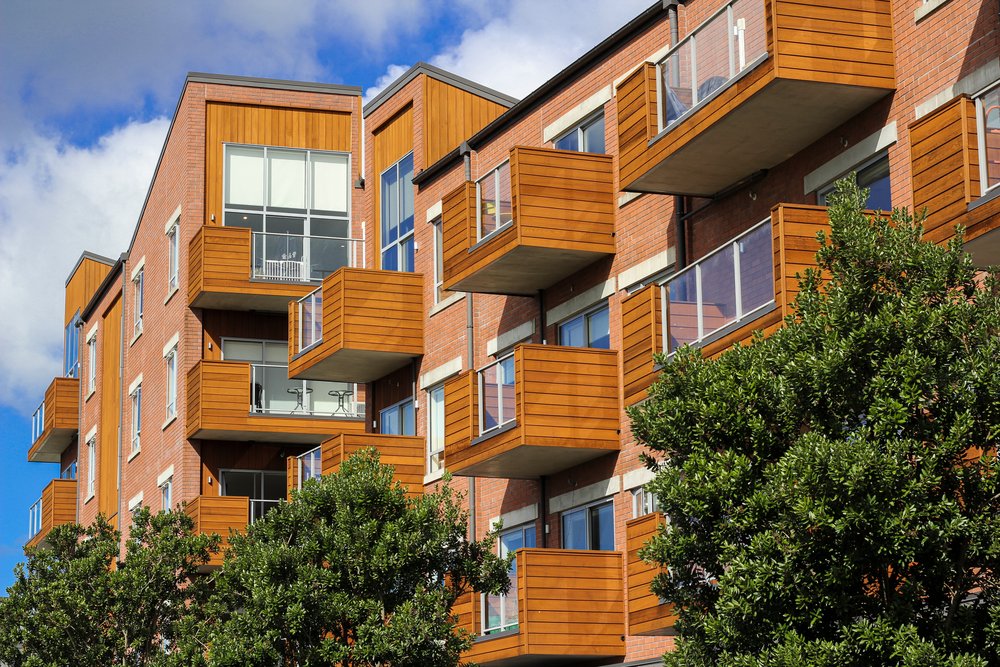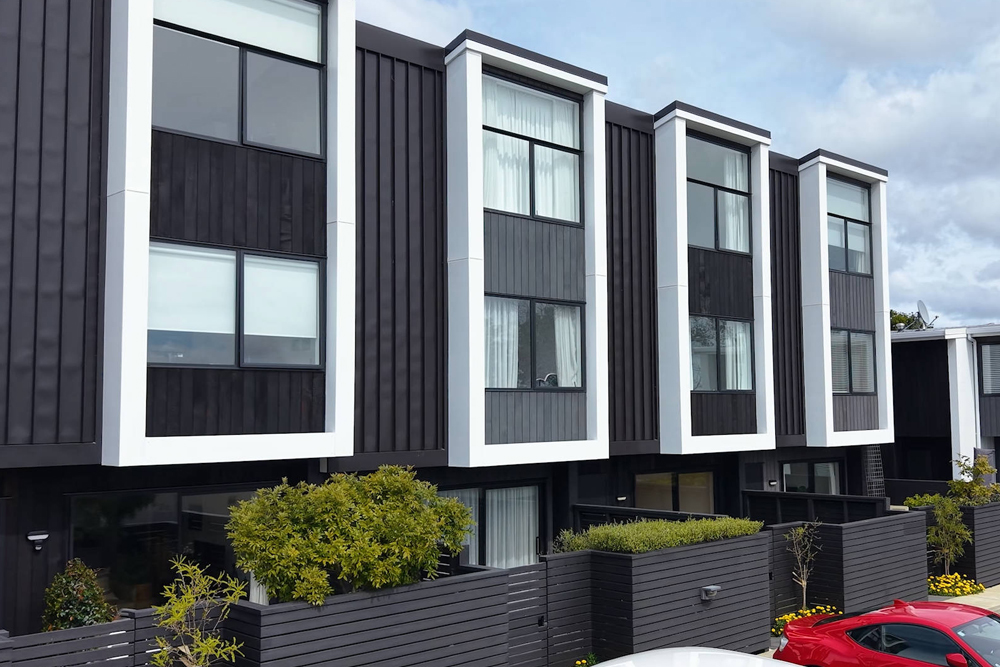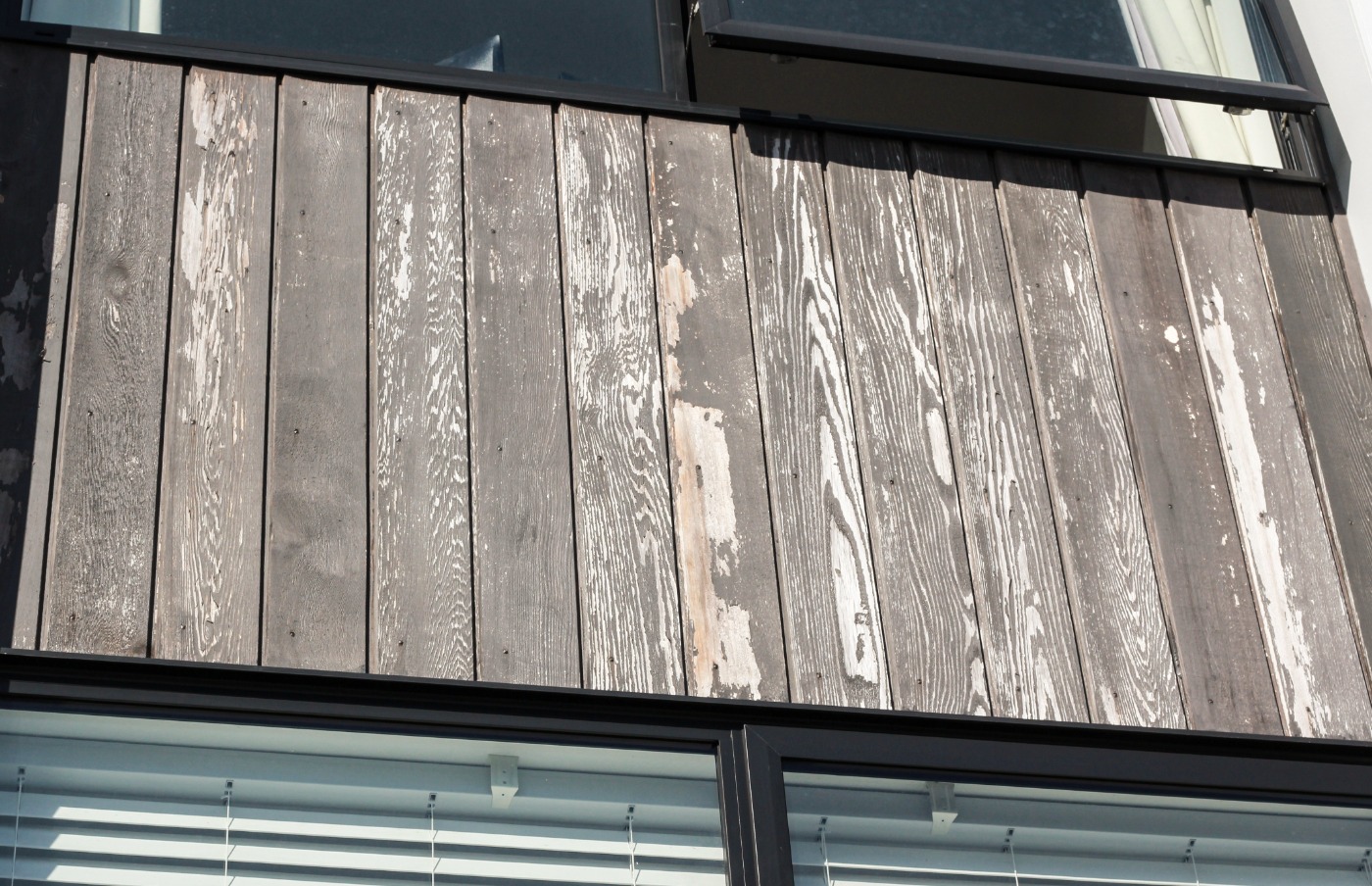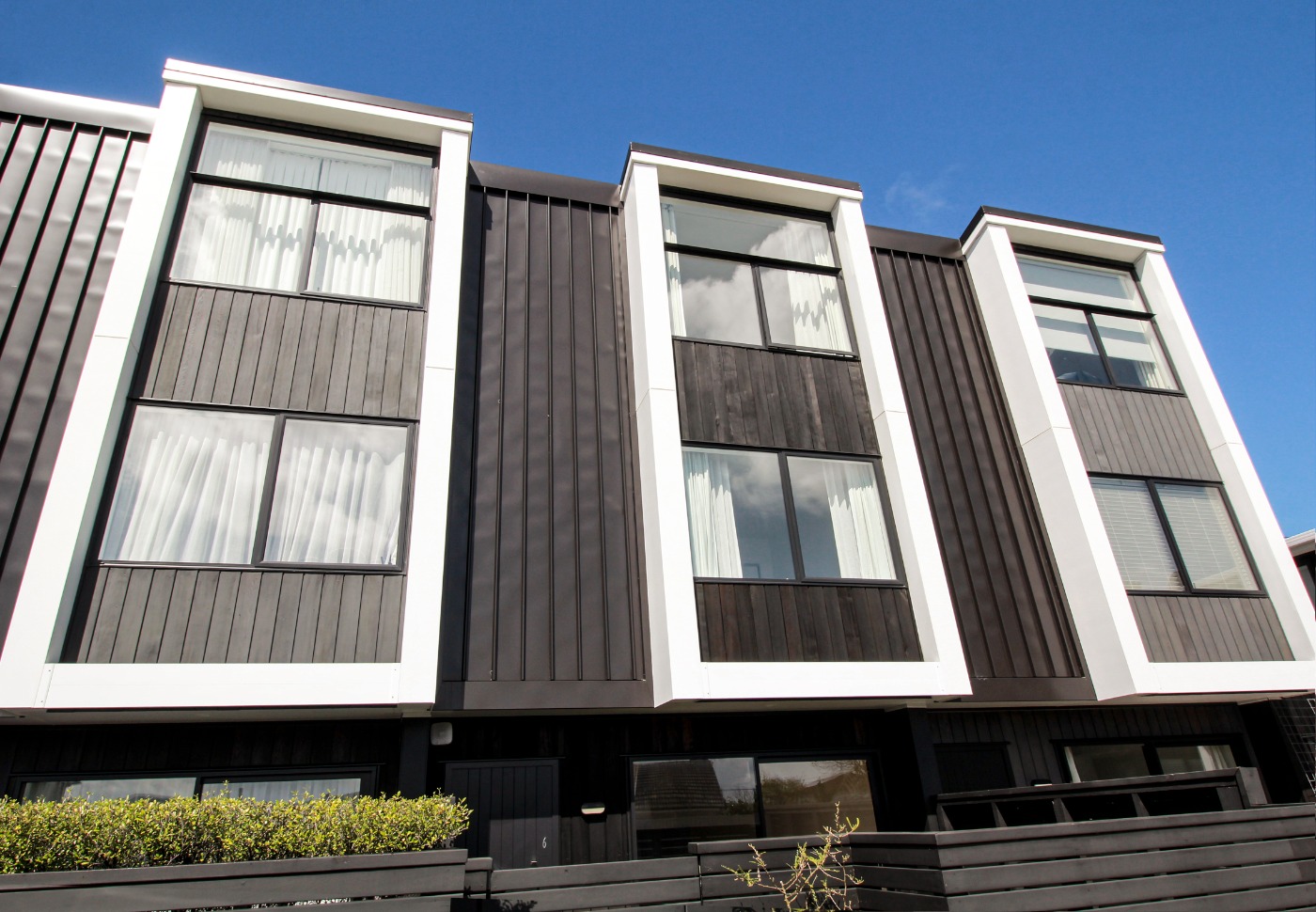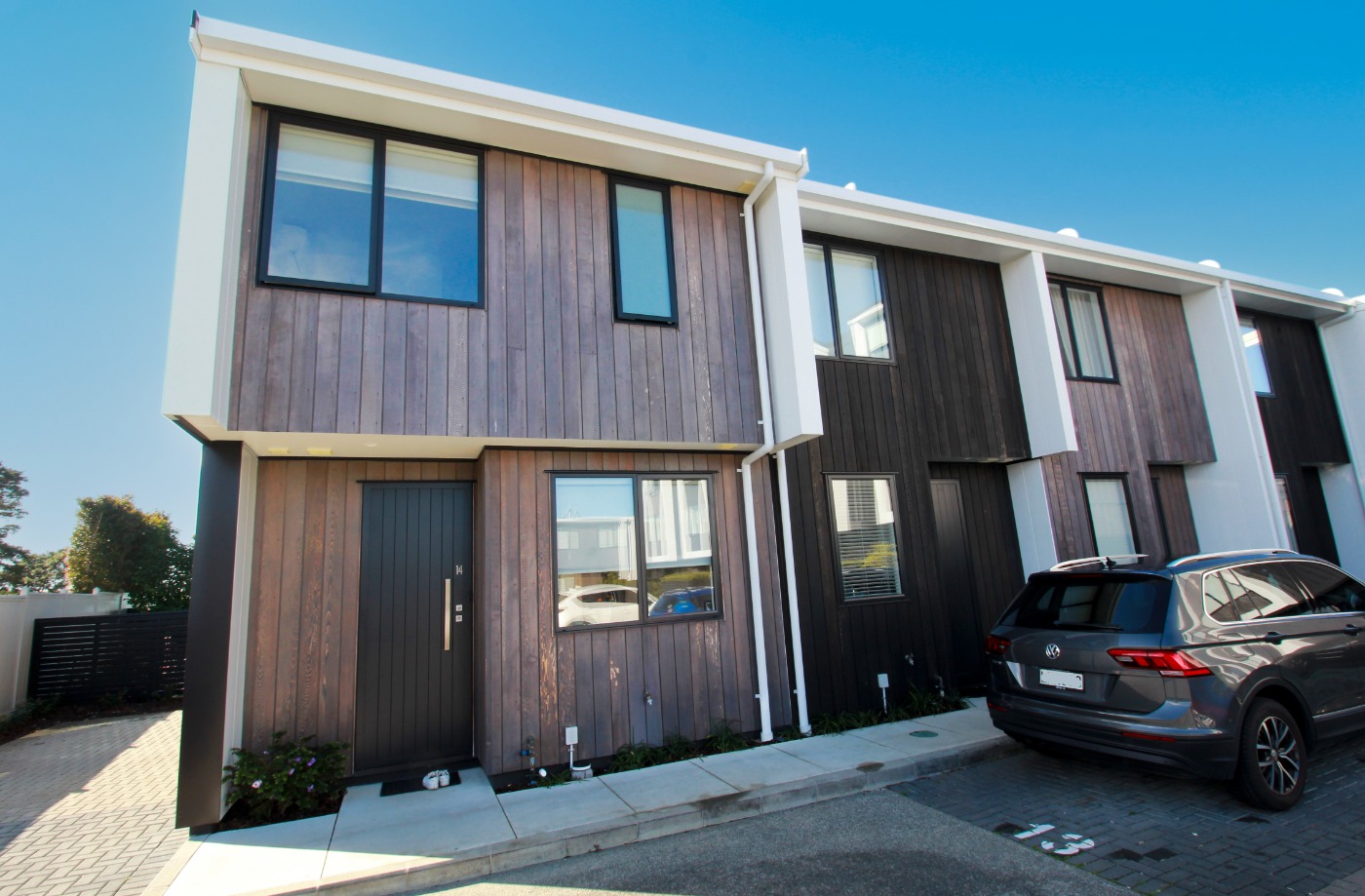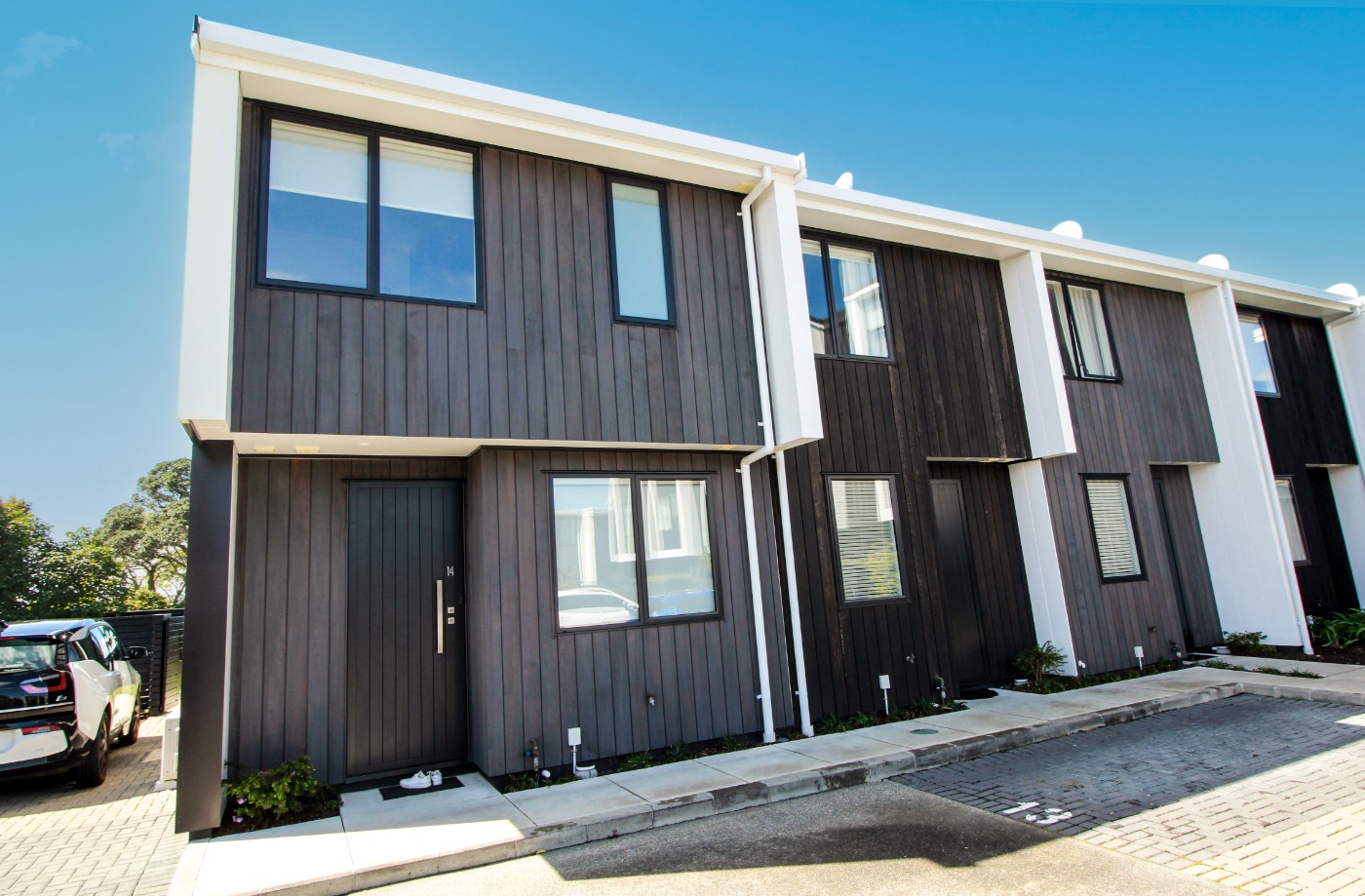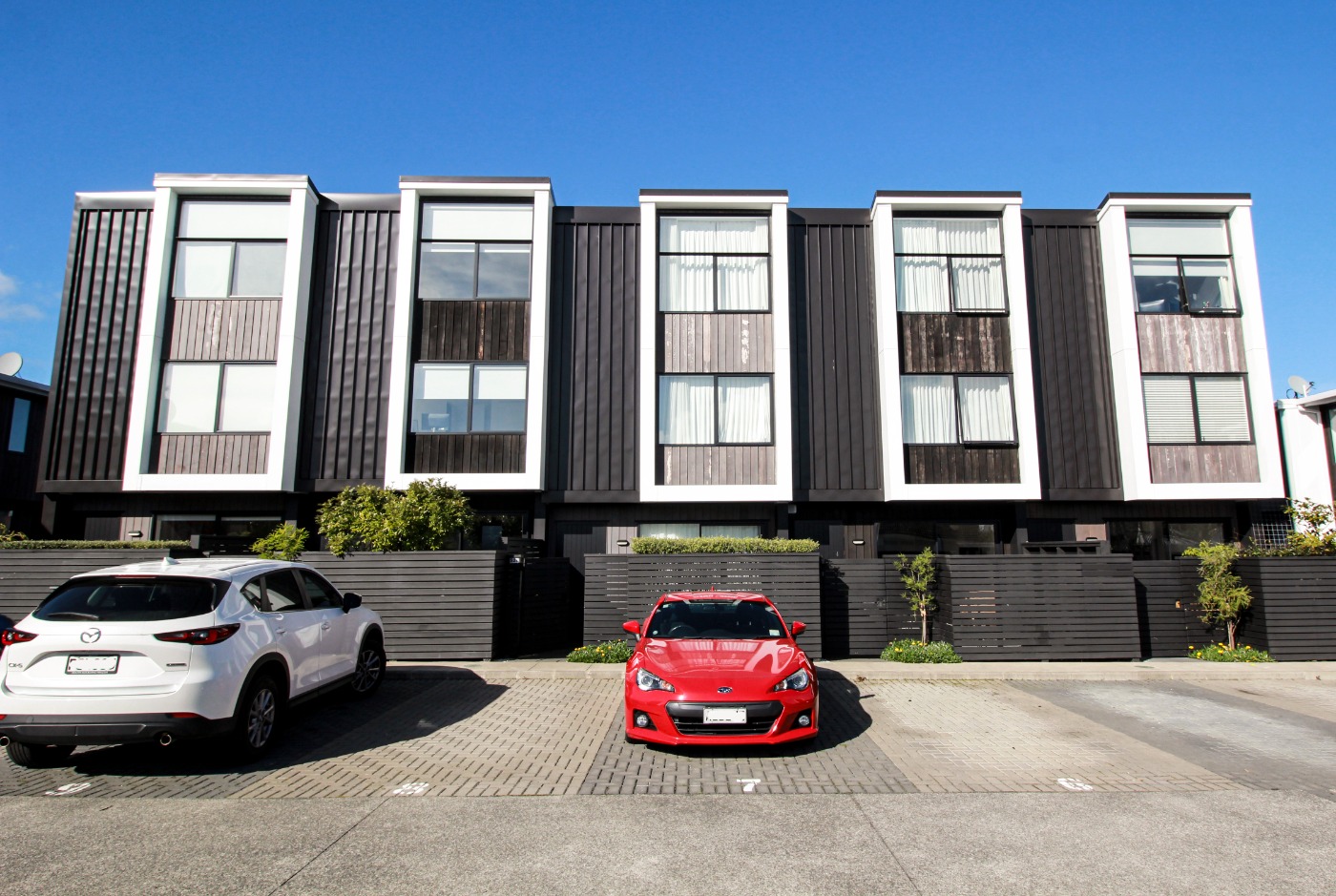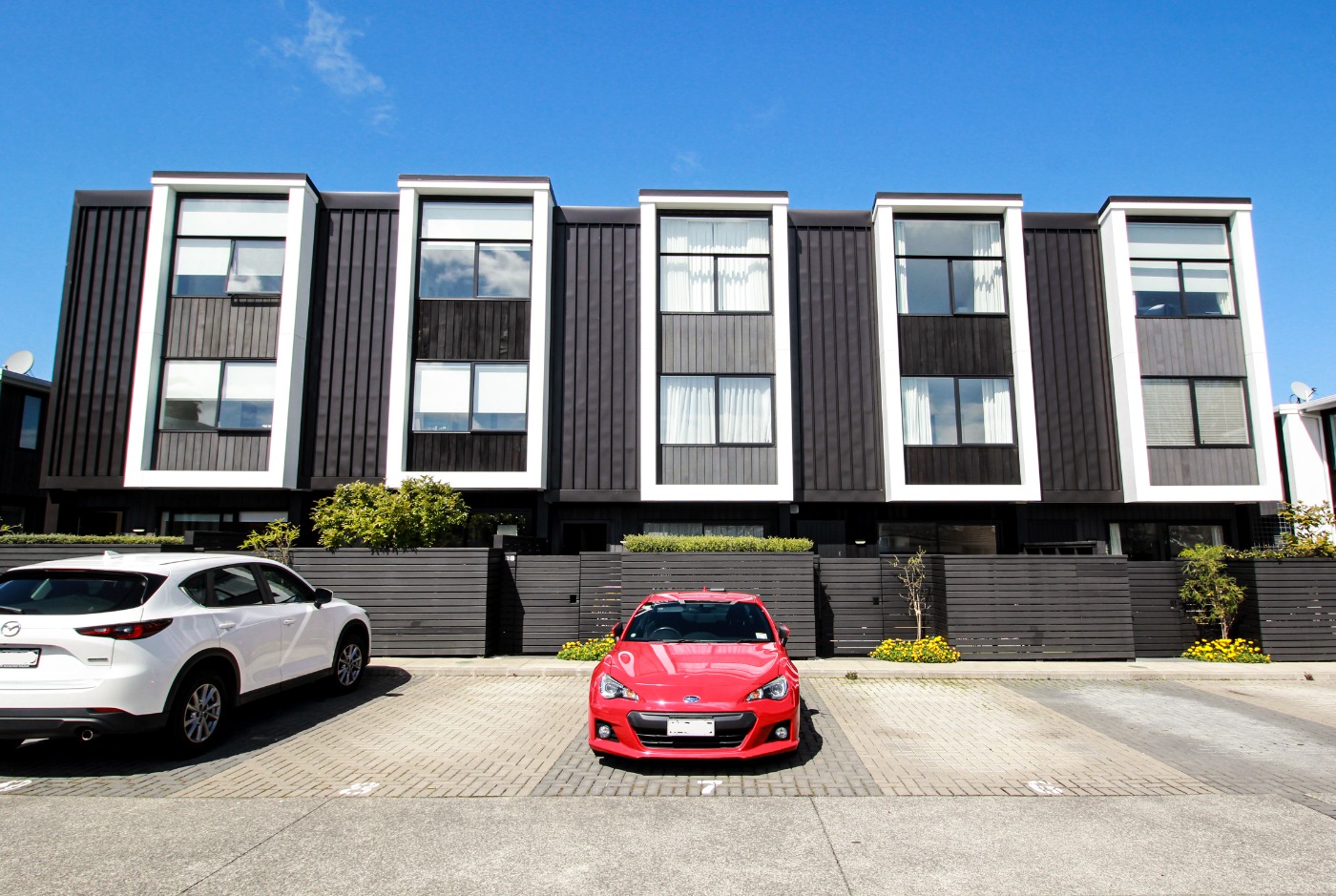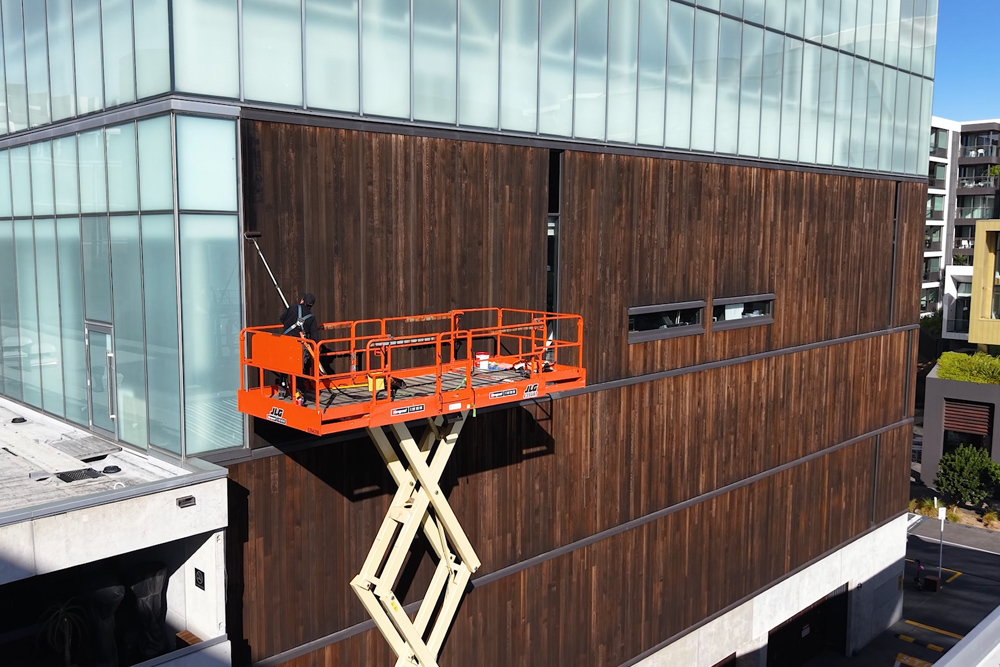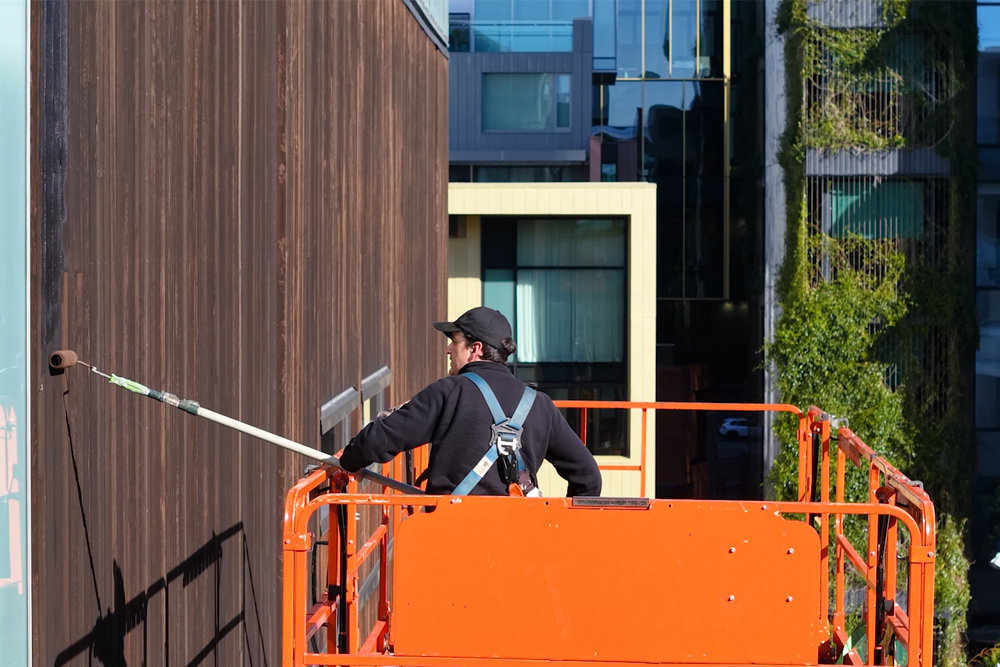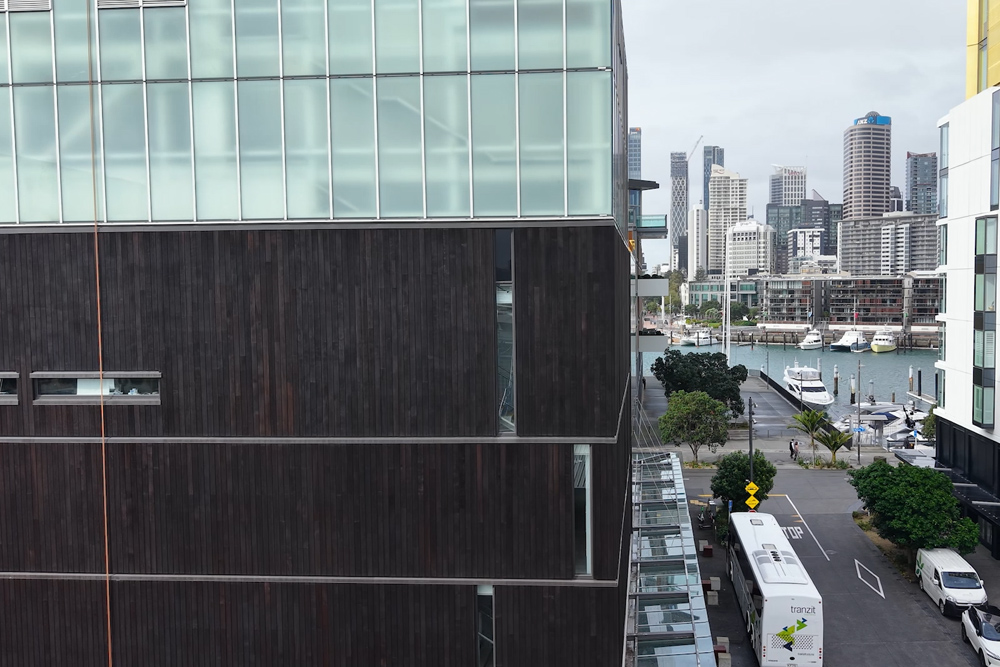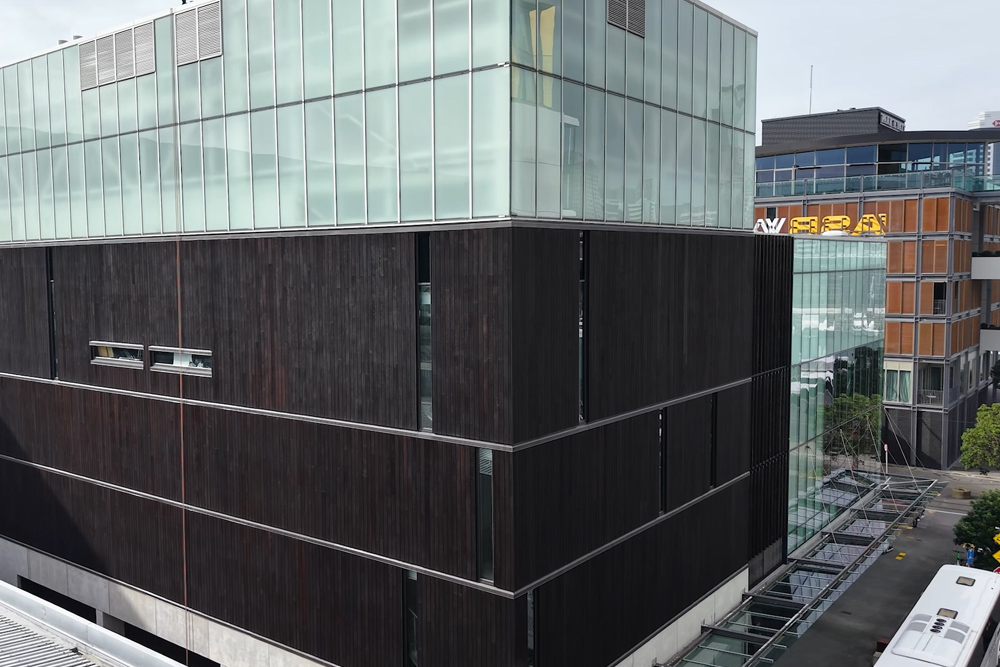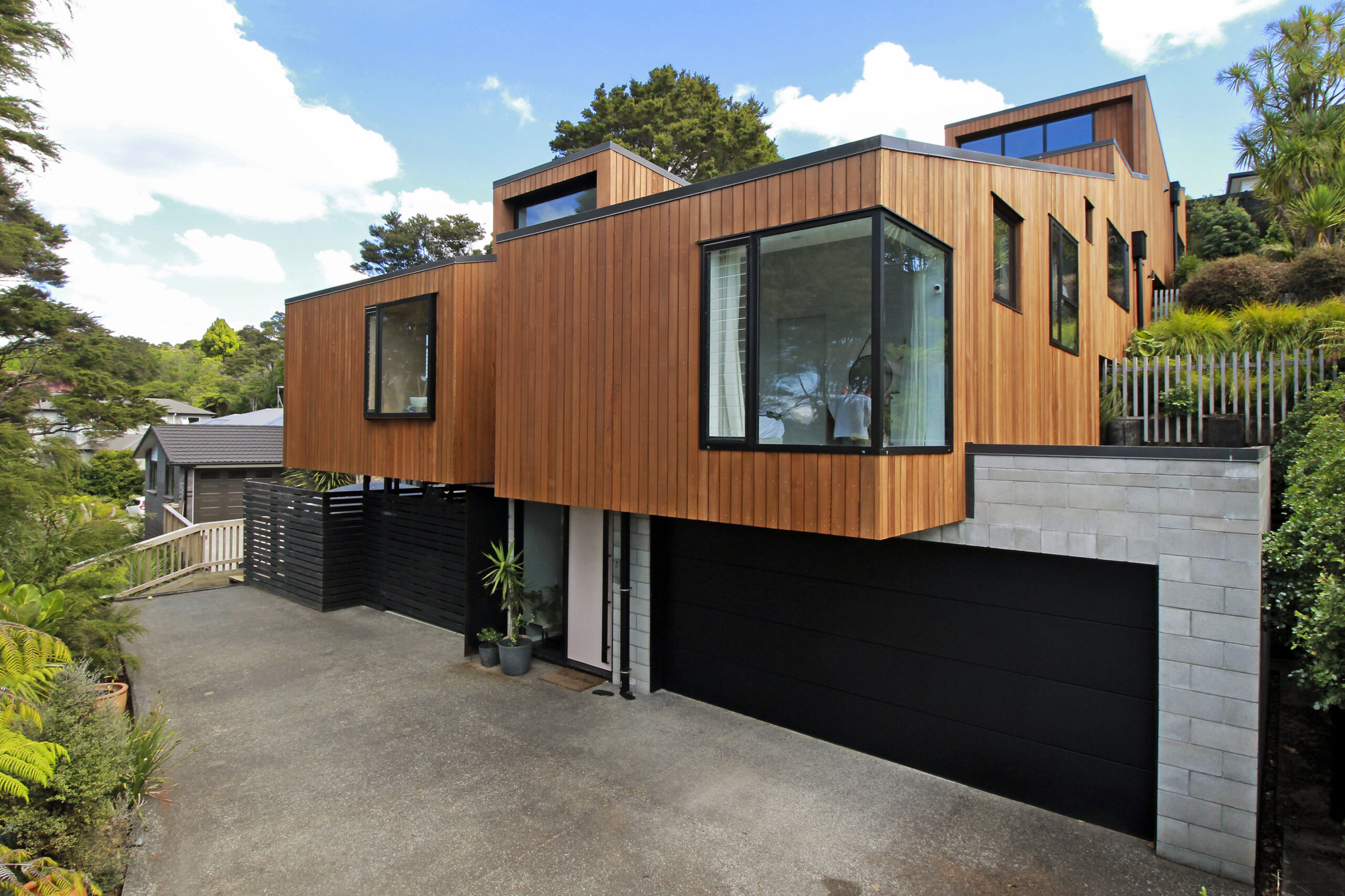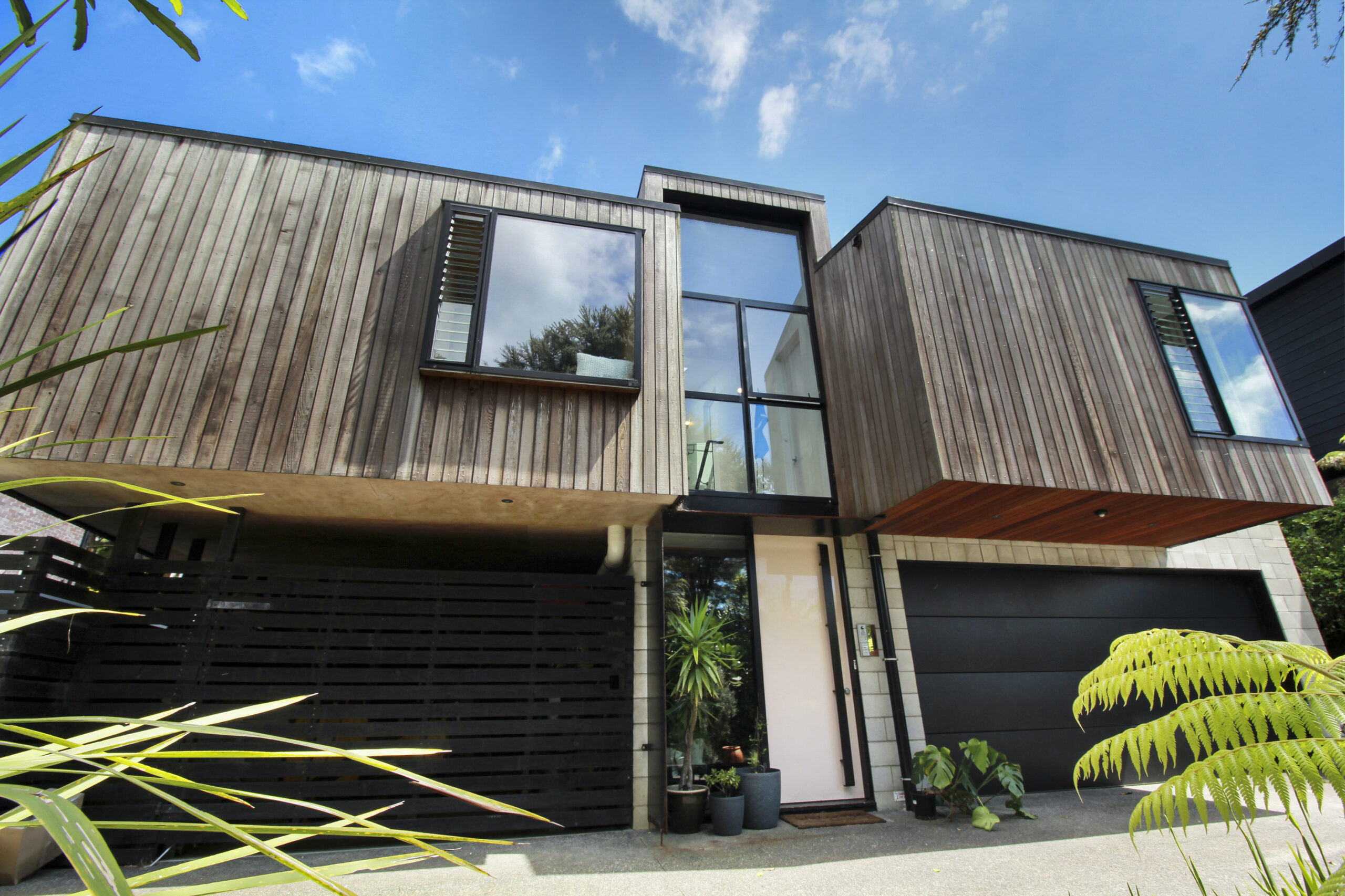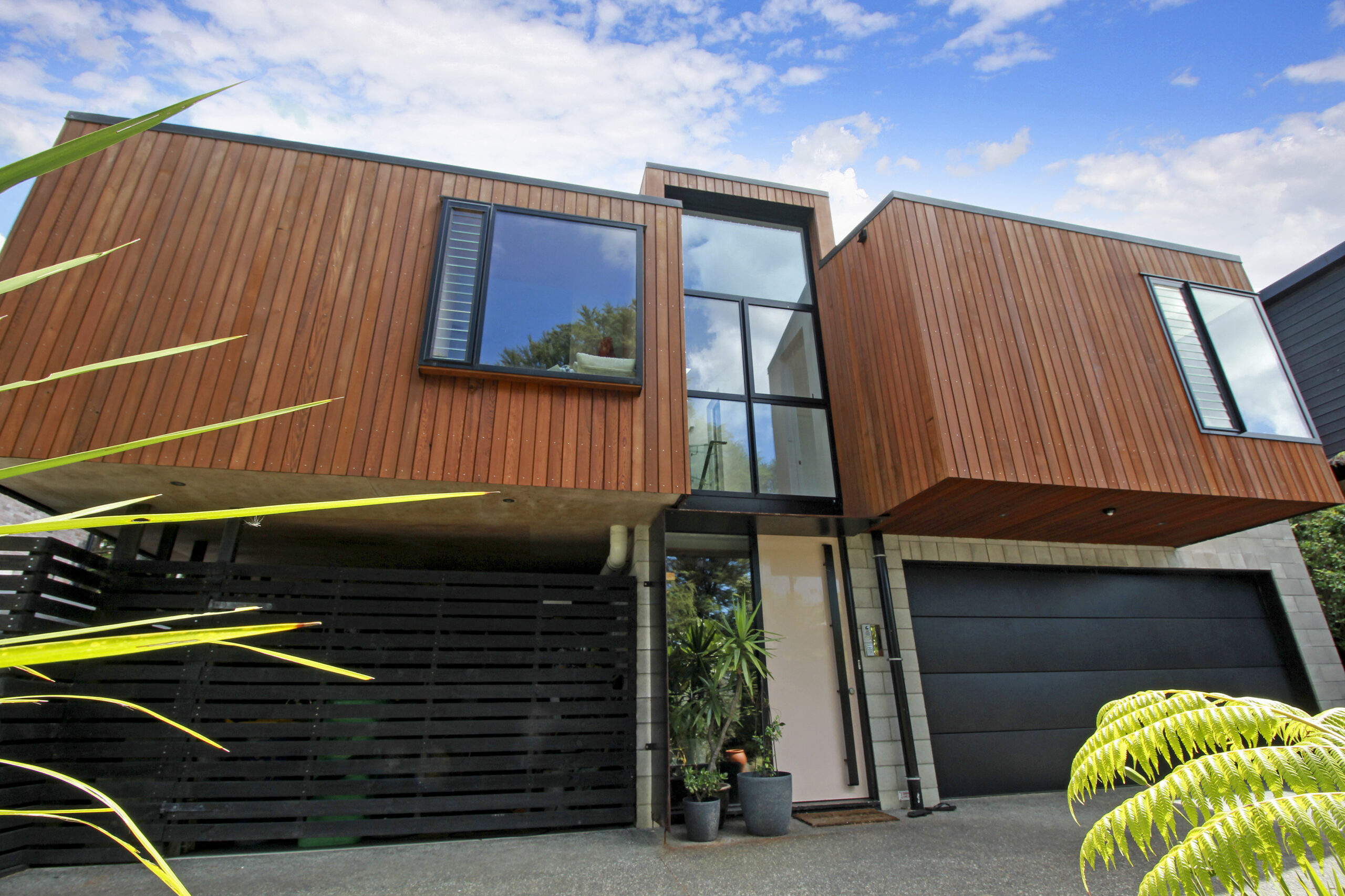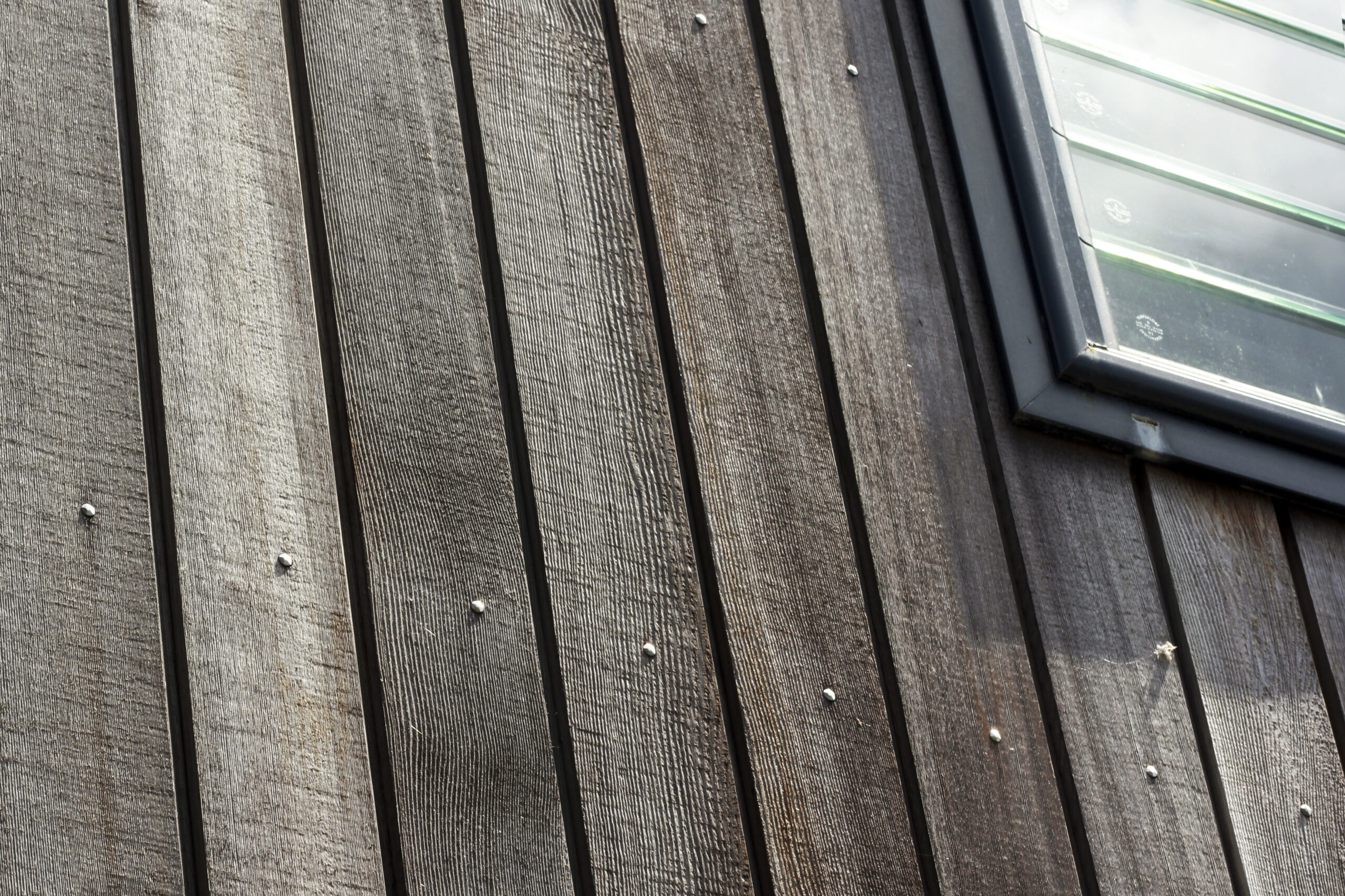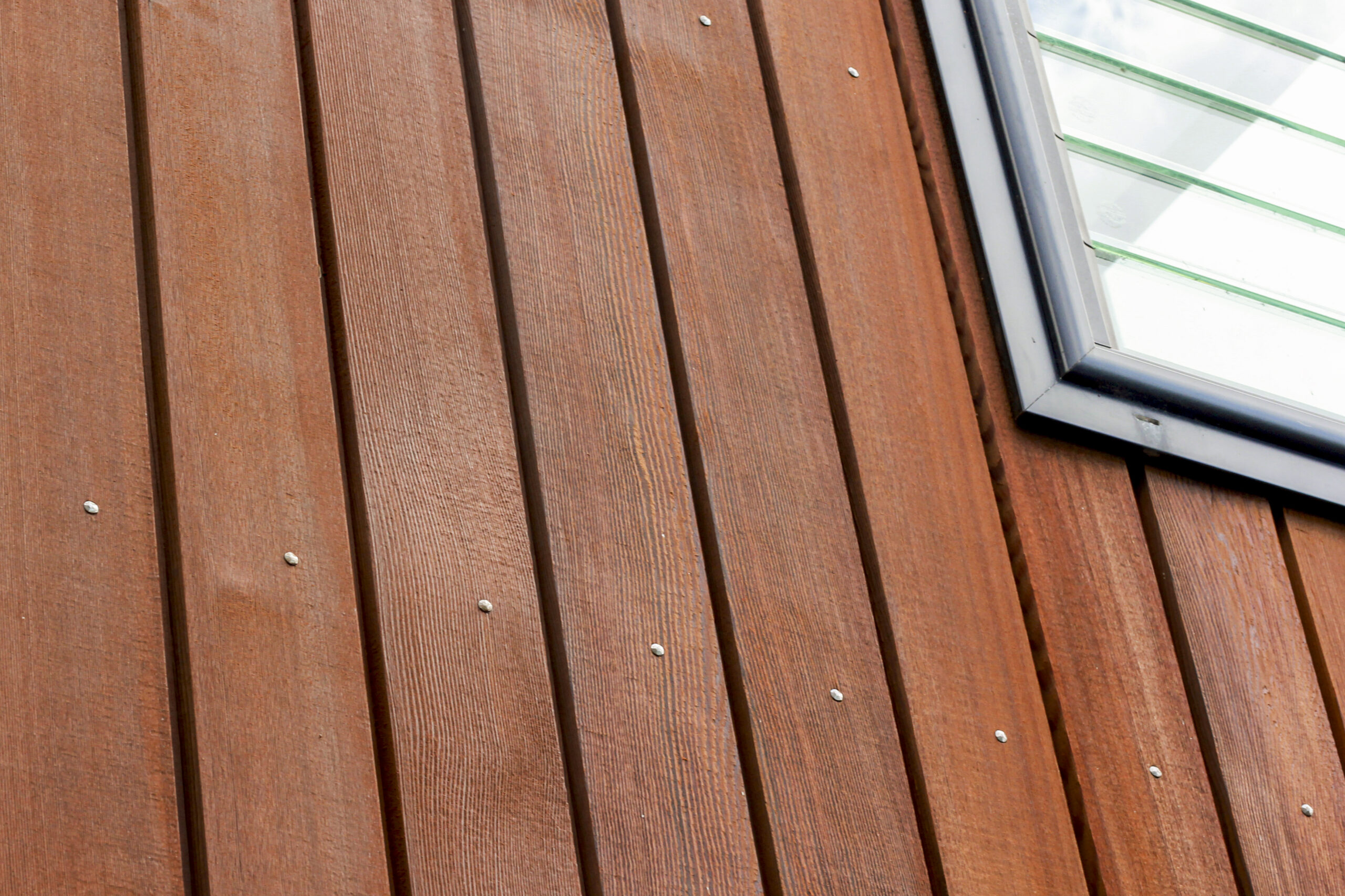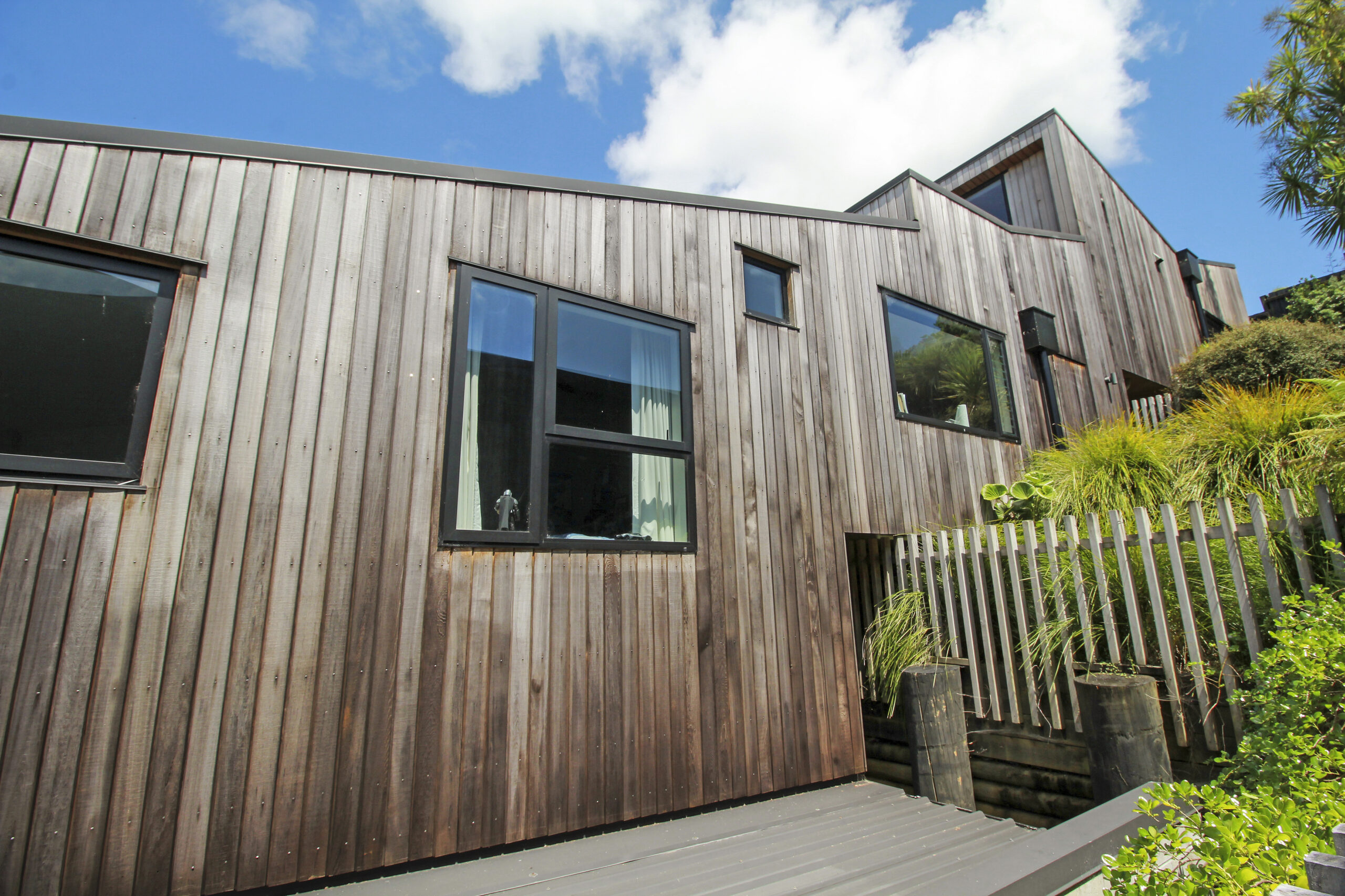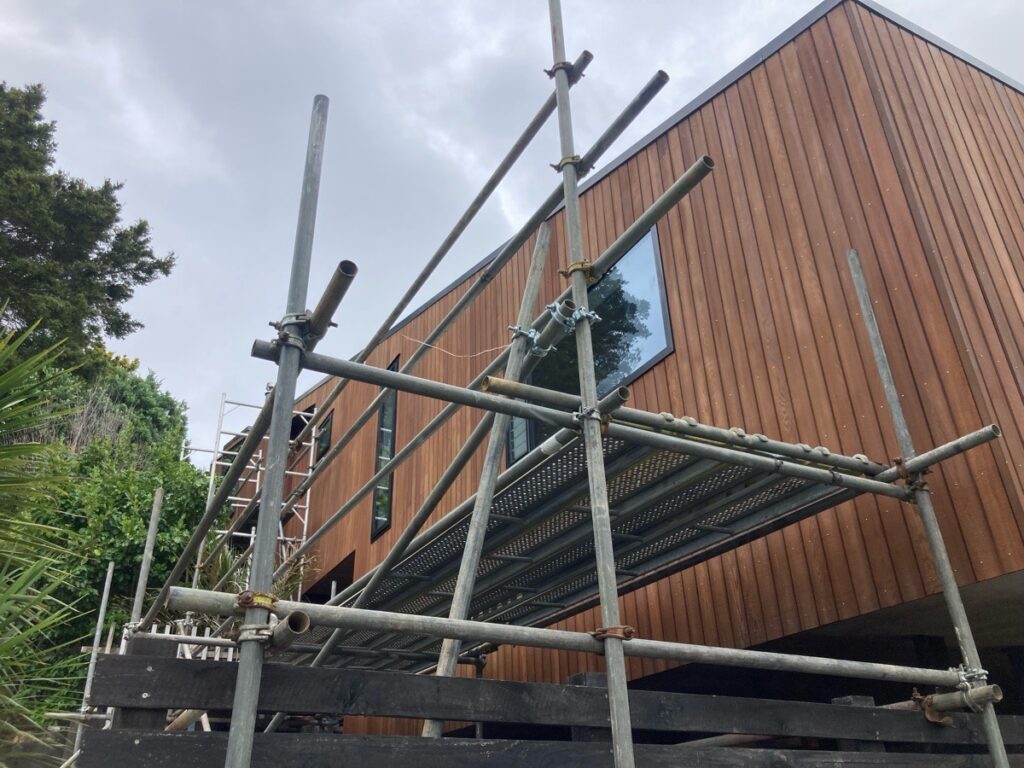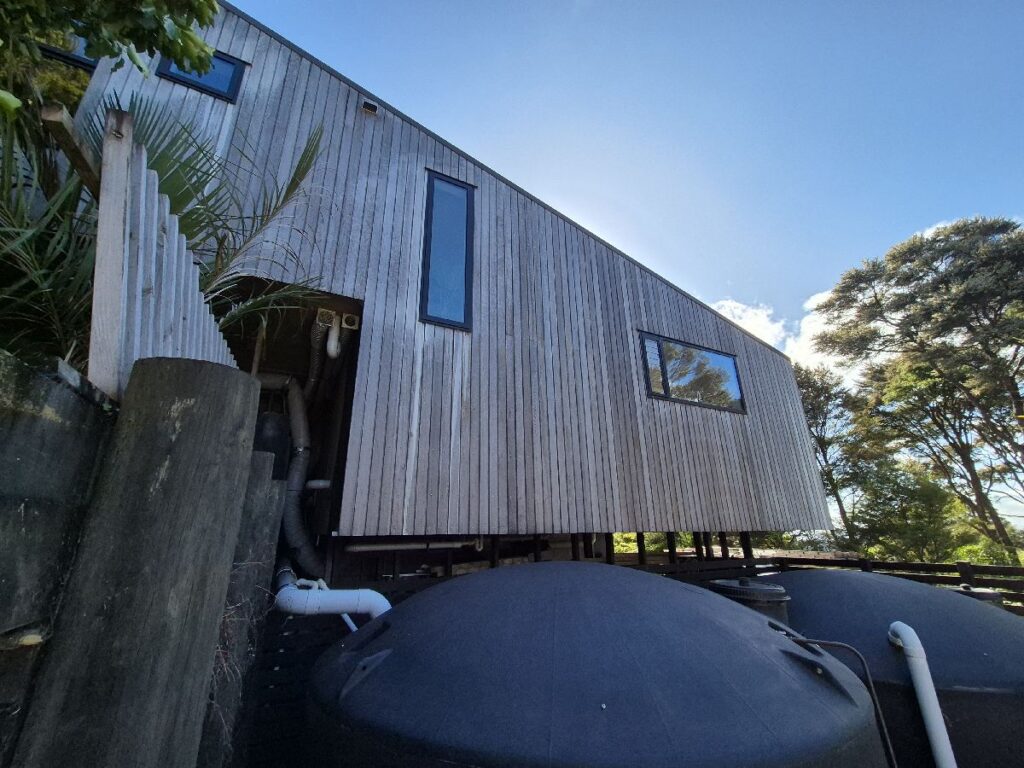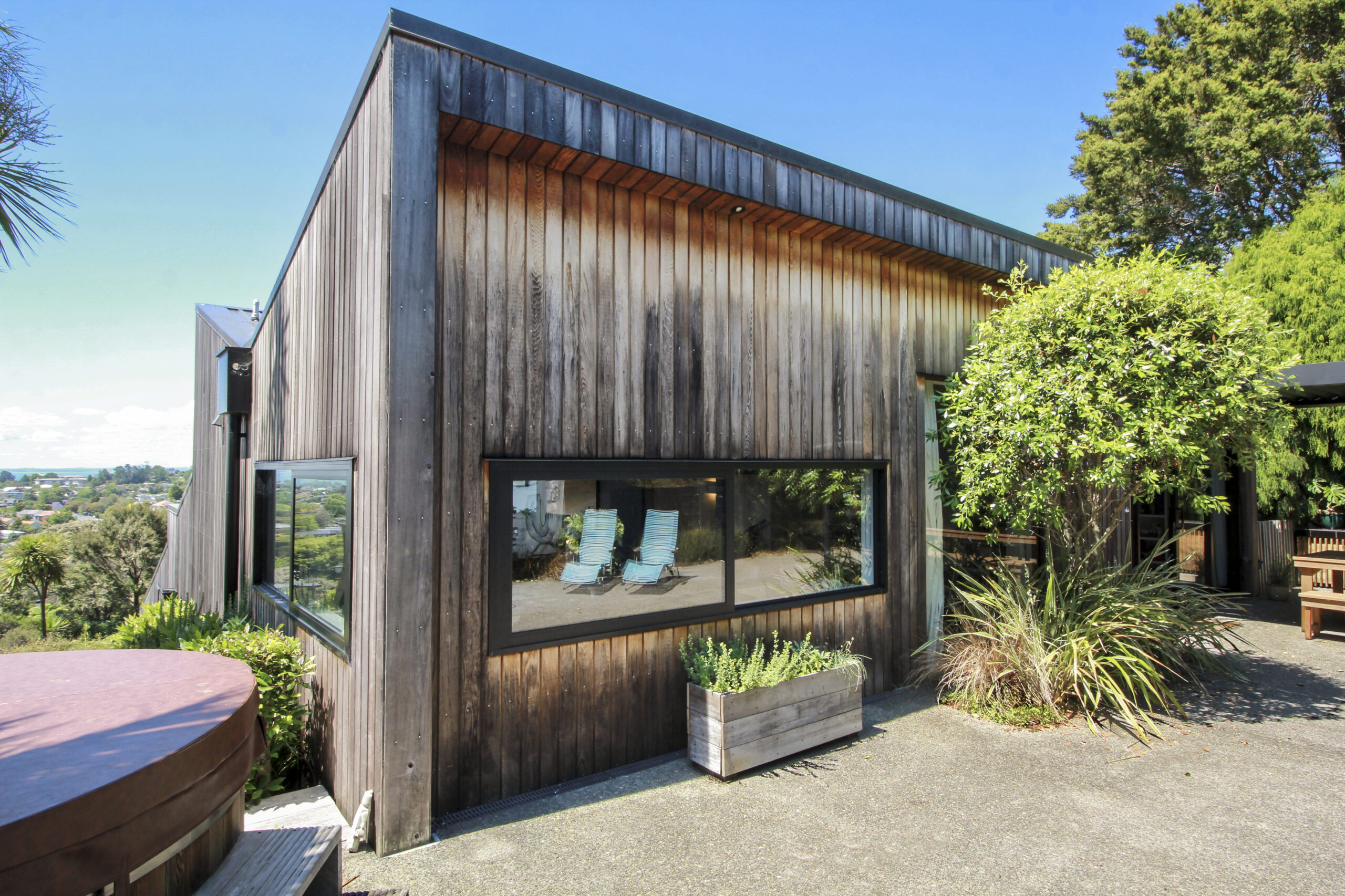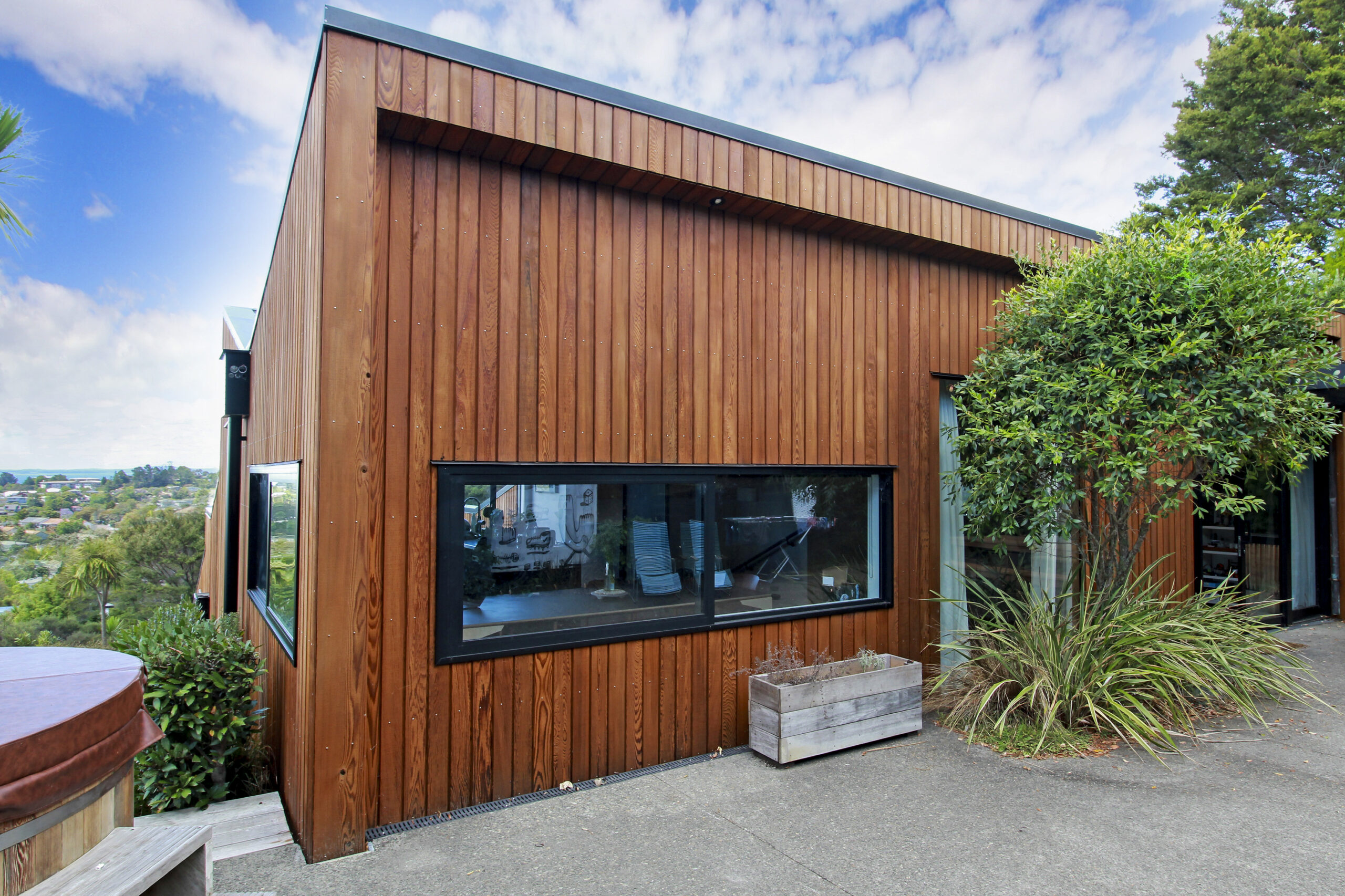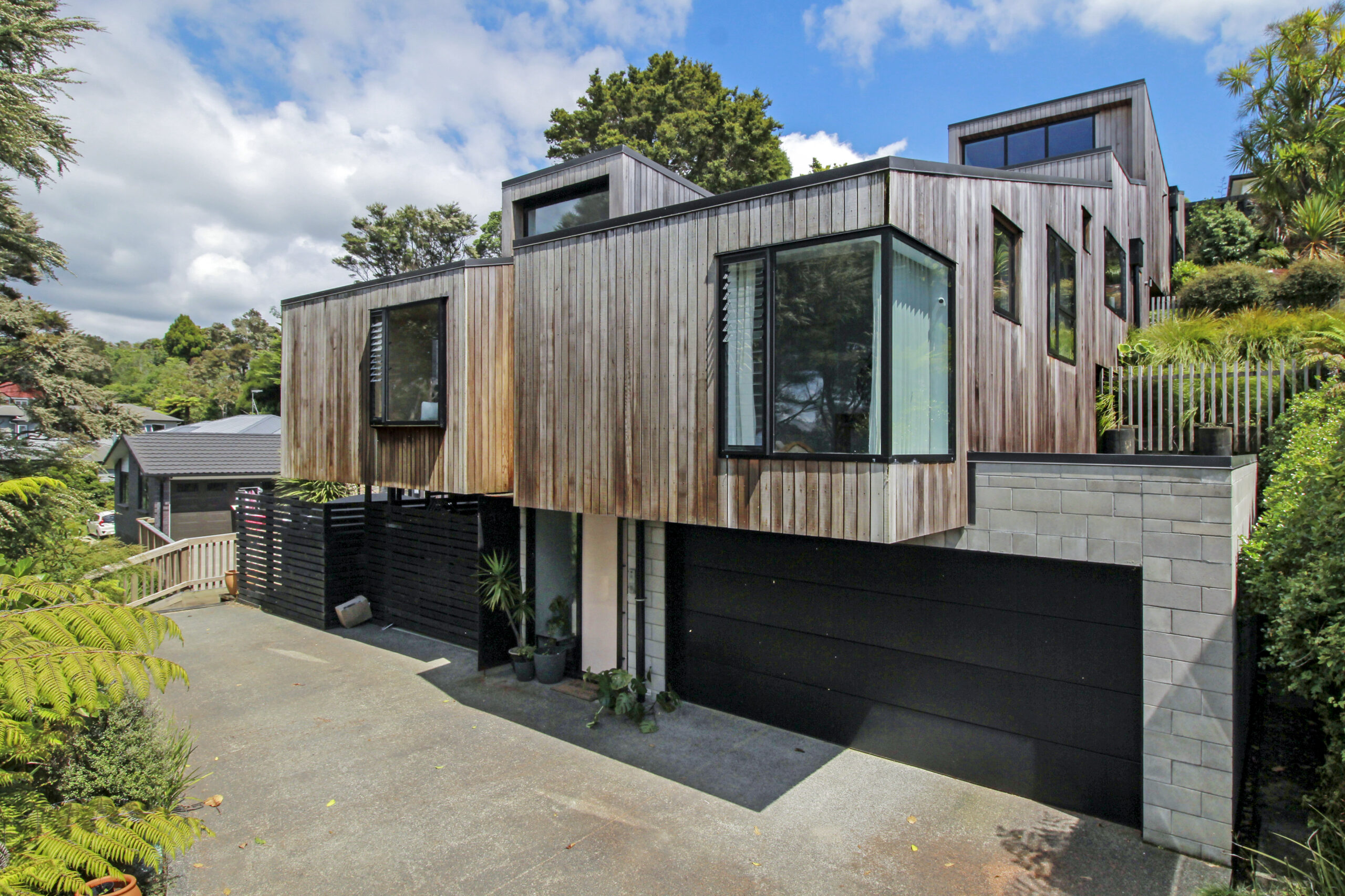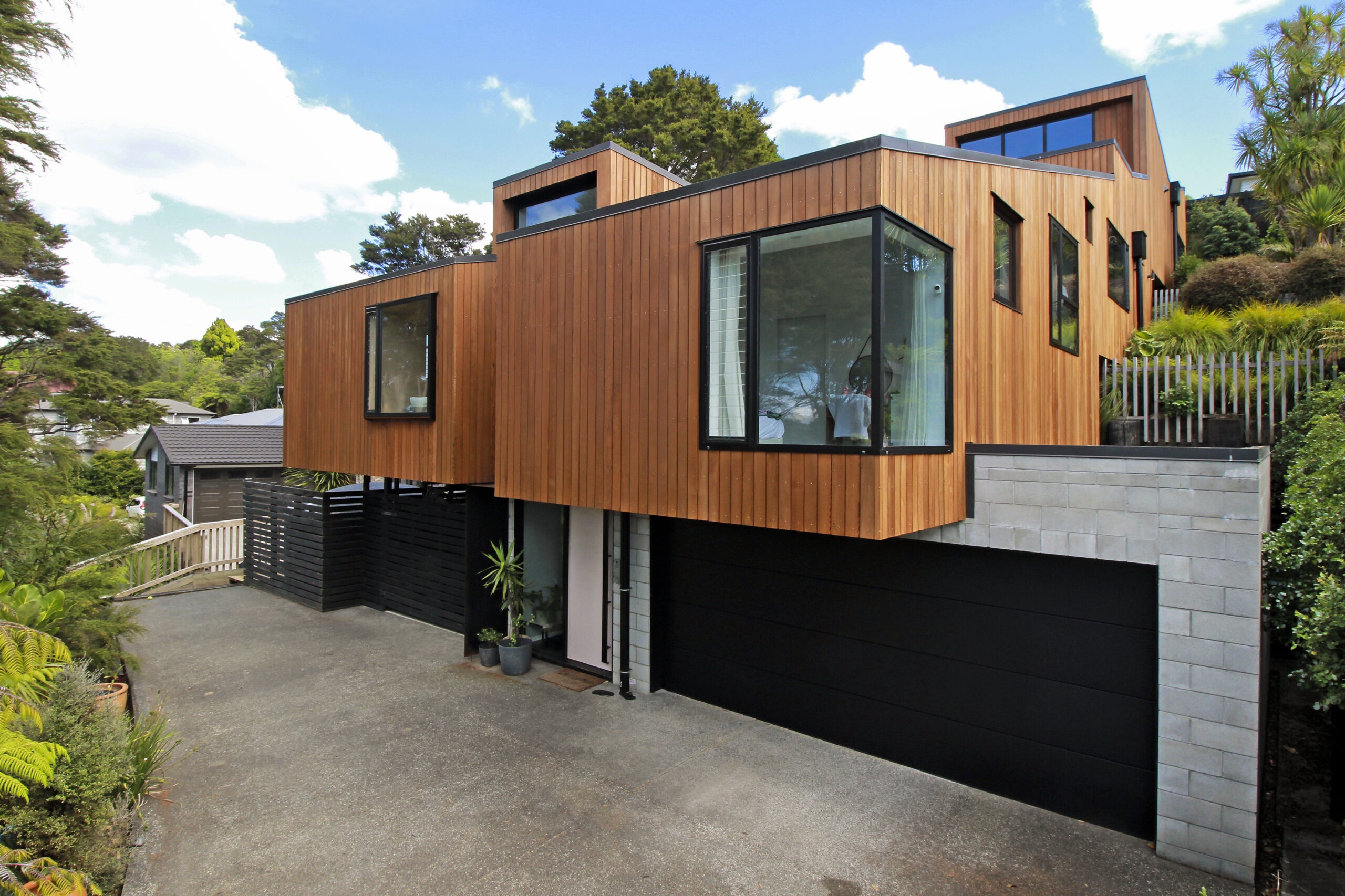Brickworks is large, mixed-use complex spanning an entire block in Hobsonville. The complex is comprised of 4 buildings situated around a central parking court and rain garden, with 60 residential homes and additional commercial units at the street level.
The mixed-use nature of the development was designed to be the commercial heart of the surrounding suburb and the appearance of the building is integral to its success.
Clad in an eye-catching mix of bricks and Cedar, the aesthetic is based on the industrial buildings that were once present on the site and pay tribute to the rich history of the area.
The building was finished in May of 2015. The original intention for the Cedar was to let it weather naturally and give the building a silvered look.
However, the rates at which the Cedar was silvering were inconsistent depending upon the orientation of the timber and the building was starting to look patchy and uneven, with some watermarks on the surface.
Up until then, the body corporate had been getting the Cedar soft washed every year but were unhappy with the results. To show the difference between a soft wash and a deep clean, we first did a demonstration on an isolated wall.
The initial results were striking and TimberTech was awarded the contract to maintain the building over a 10-year period.
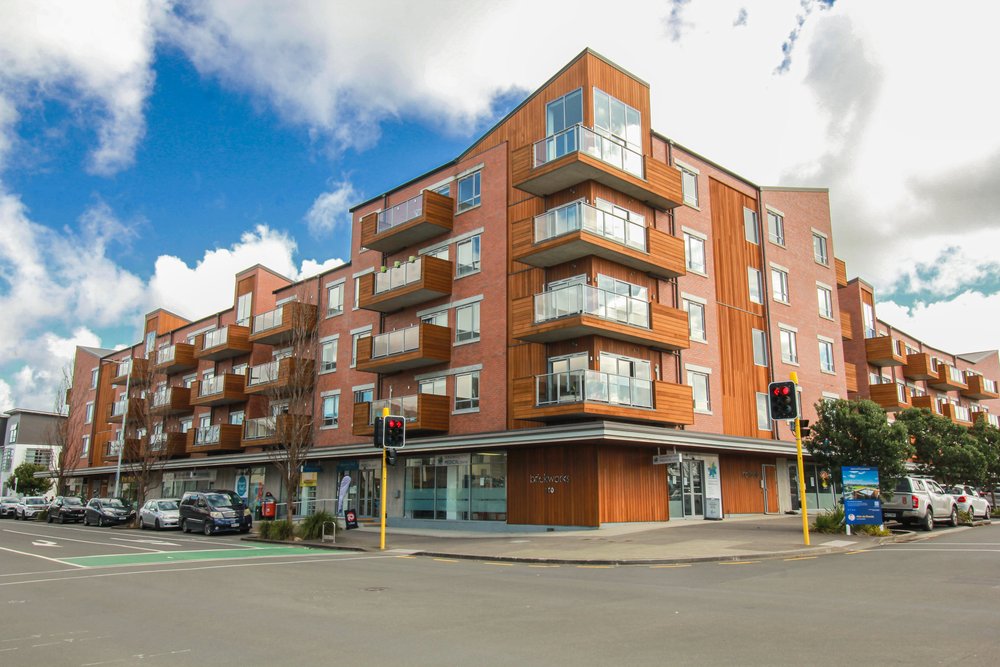
Maintenance Timeline
The body corporate for Brickworks first approached TimberTech in March of 2020.
- 2021, August – Deep clean and recoat the entire building.
- 2022, May – Recoat the sun-exposed dry faces only.
- 2024, Oct – Soft wash, recoat the sun-exposed northern faces and assess the other faces.
In general, sun-exposed faces should be recoated every 2-3 summers to protect the Cedar against the elements and keep it looking great all year round.
As part of the 10-year maintenance plan, we are scheduled to wash and recoat the entire building in 2026, recoat the sun-exposed dry faces in 2028, then recoat the sun-exposed dry faces and assess the other faces in 2030.
Cedar Maintenance Process
As the original intention had been to let the building silver naturally, the Cedar was in a natural state with no oil or stain.
Upon first inspection, the northern face was dry as a bone. The remaining faces were faring better, but still in need of treatment to protect against future wear and tear.
We started with a deep clean of the entire building to remove the oxidised timber fibres responsible for the Cedars patchy, silvered look. The Oxyclean solution also removes all the dirt, grime and organic matter, restoring the natural timber tones.
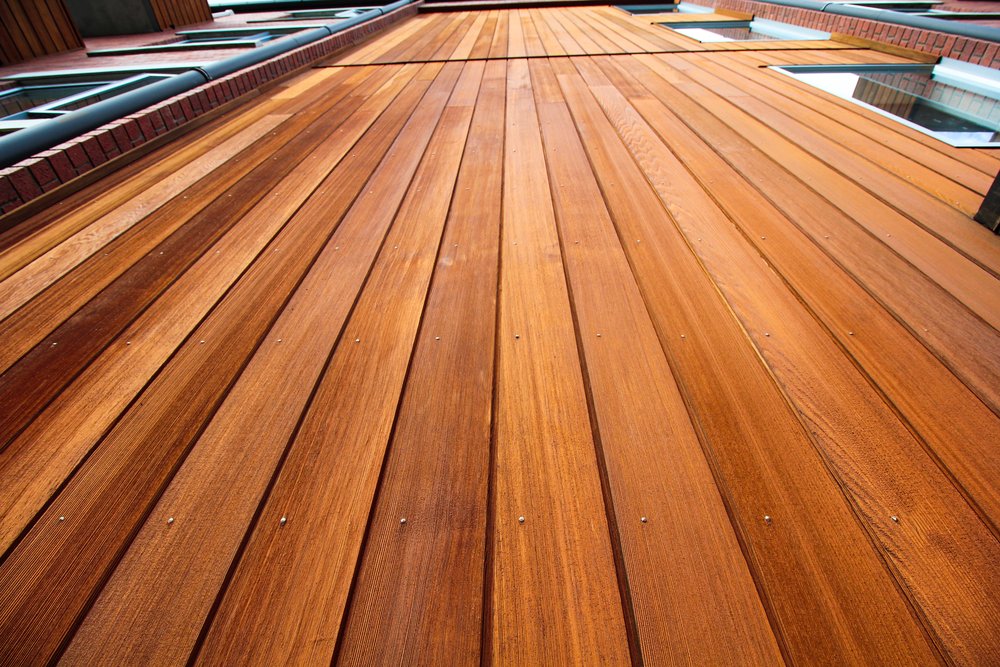
Once clean, the timber was treated with a tinted penetrating oil developed by Wood-X.
As the Cedar had not been treated previously, the initial application of oil was quickly absorbed by the dry timber. We then needed to return 6 months later to give the entire building a second application.
Cedar Maintenance Challenges
The main challenges for the project were the height of the buildings, the sheer size of the complex and access management.
Brickworks is four stories high, and most of the apartments have Cedar balconies that jut out from the main structure. To work safely at this height, we scaffolded whole sections of the building at a time and used a 28-meter knuckle boom for added versatility.
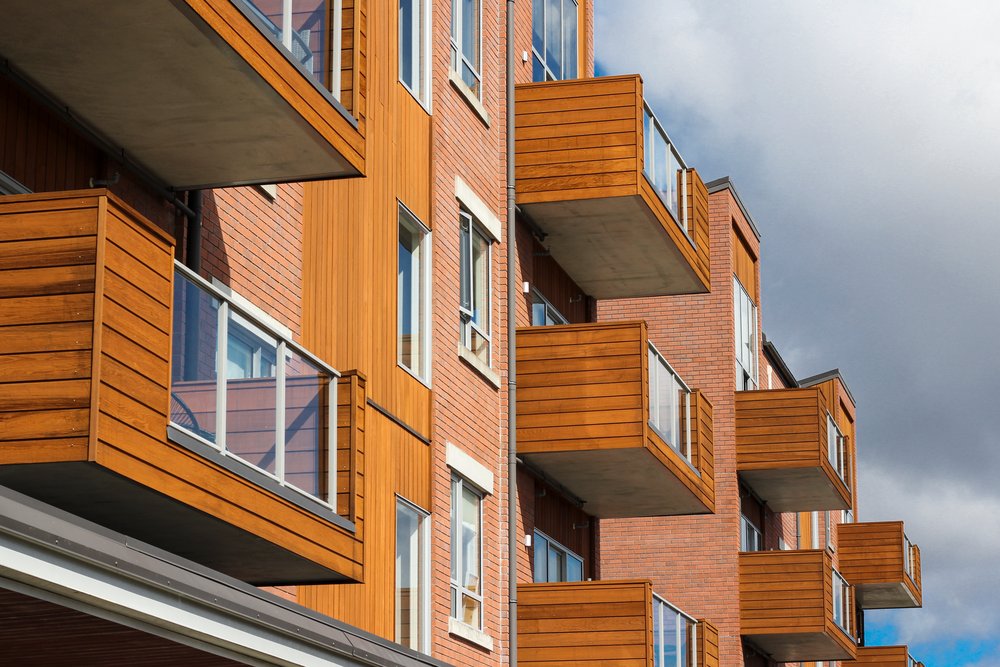
The configuration of the complex – basically a rectangle with one side that runs along a main road, heavy with car and foot traffic – meant that we had to manage traffic and operate in a dynamic environment, following strict health and safety procedures.
Cedar had also been used on the inner faces of the buildings above the gated carpark, which required us to work with the residents to organise ongoing access.
The Final Outcome
The whole job took 6 weeks in total. There was a lockdown midway through the project which pushed the job out, but in ideal conditions a project of this size takes around 4-6 weeks.
The body corporate, residents and shop owners were all amazed by the transformation. This was a prestigious building upon completion and there was no reason for it to age prematurely.
After deep cleaning the Cedar and treating it with oil, the look turned from shabby grey to a golden-brown lustre. With regular maintenance, there is no reason why it can’t look fresh and vibrant for years to come.
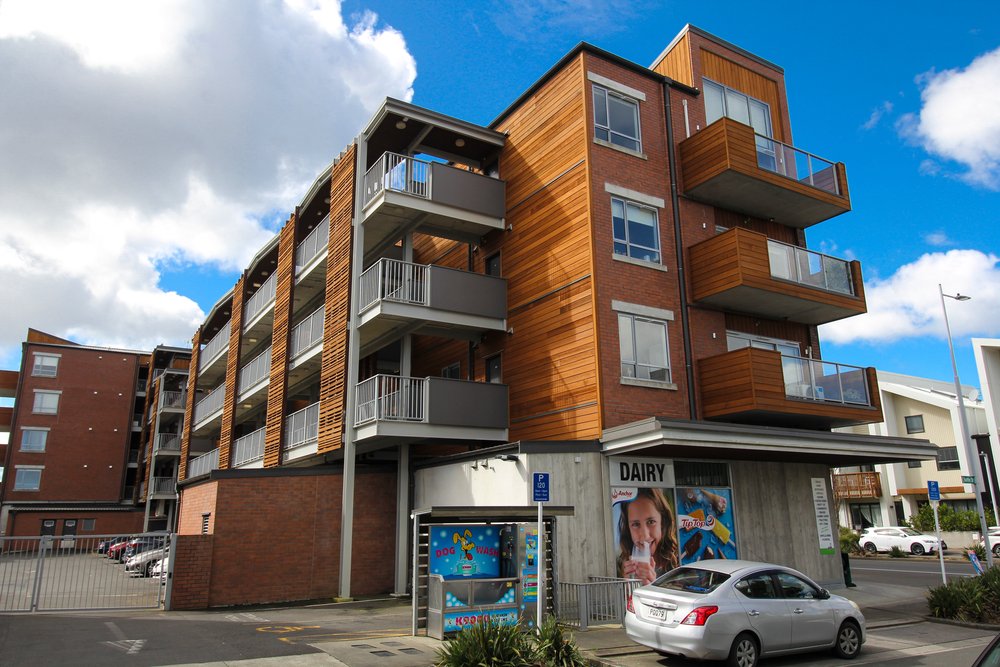
Our team was also stoked with the final outcome. This was a complex job with a lot of moving parts, and the team pulled it off flawlessly.
But don’t just take our word, head over to 160 Hobsonville Point Road and see for yourself!
With the rise of Cedar as a preferred cladding for apartments and office buildings, this type of work is only going to grow more specialised. TimberTech has the expertise and the experience to manage any job, no matter the size or the scope.



